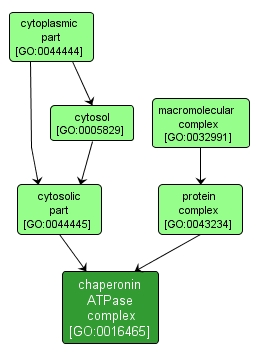GO TERM SUMMARY
|
| Name: |
chaperonin ATPase complex |
| Acc: |
GO:0016465 |
| Aspect: |
Cellular Component |
| Desc: |
Multisubunit protein complex with 2x7 (Type I, in most cells) or 2x8 (Type II, in Archaea) ATP-binding sites involved in maintaining an unfolded polypeptide structure before folding or to entry into mitochondria and chloroplasts. |
|

|
INTERACTIVE GO GRAPH
|














